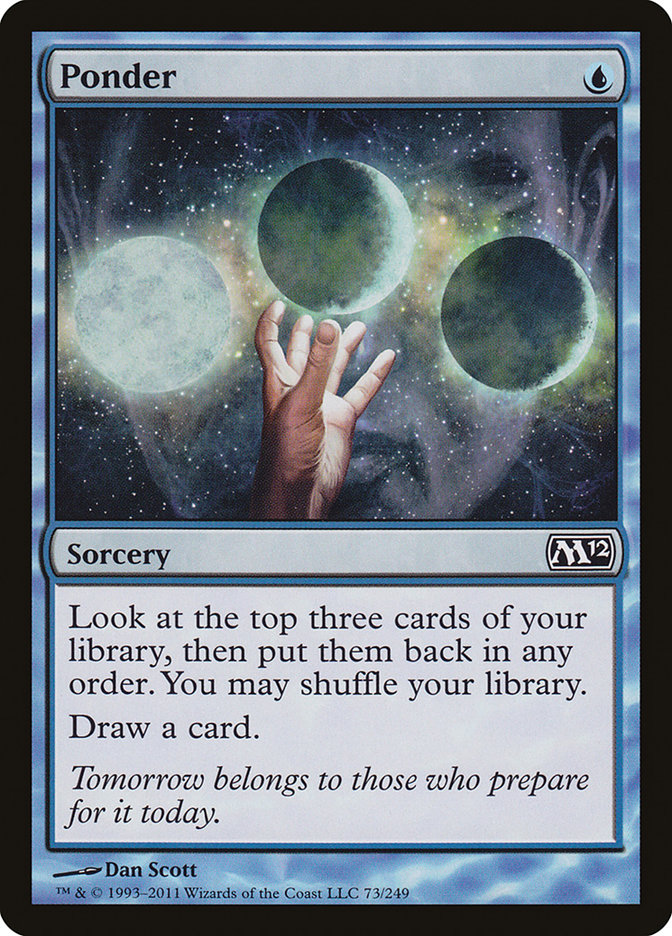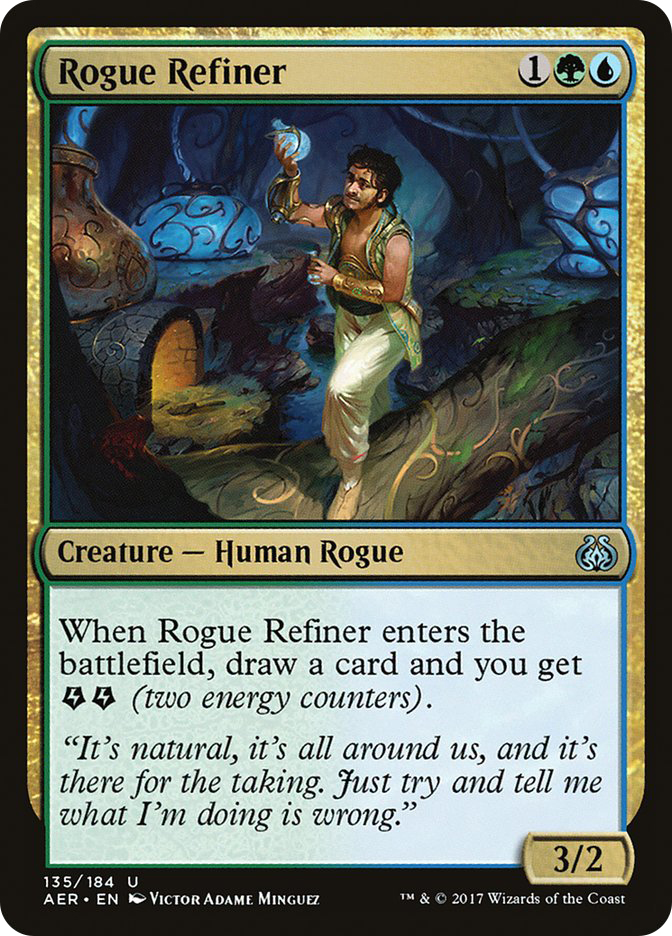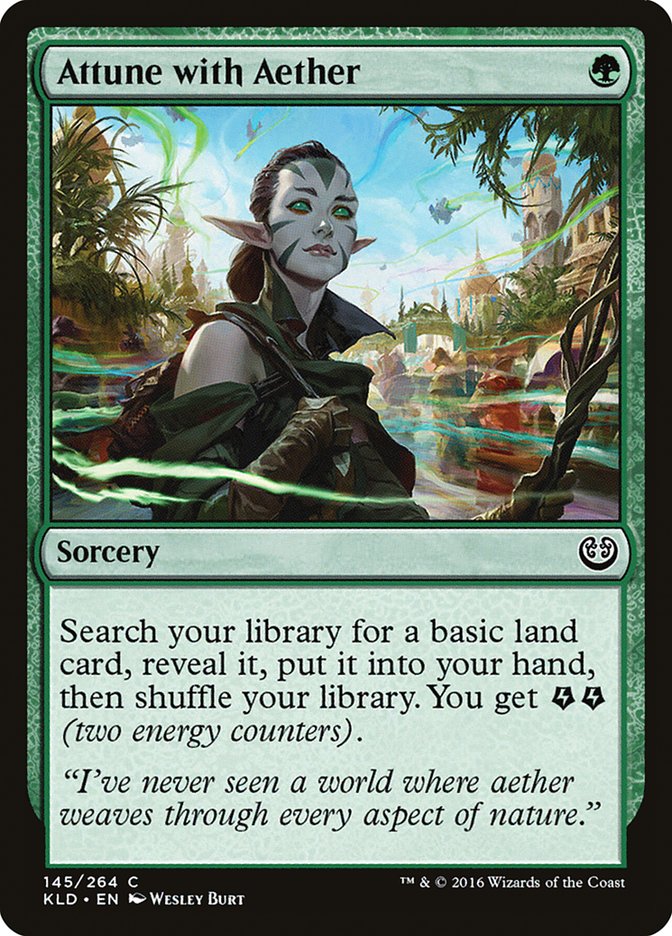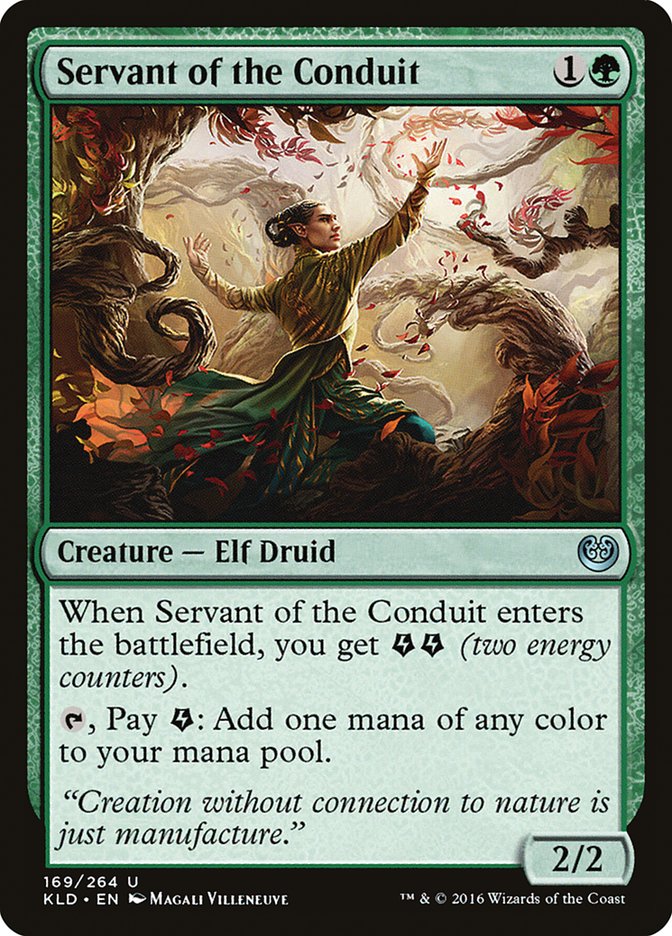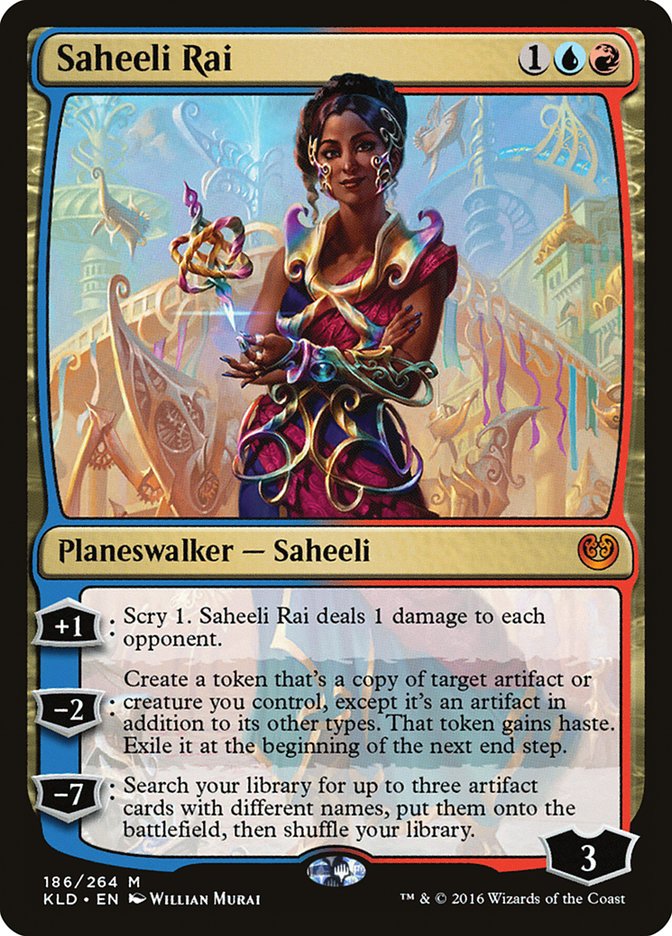I’ve written in the past that I’m skeptical of the idea of trying to make objectively correct plays in all circumstances and objectively correct draft picks. I generally believe that it’s correct to strive to make the best decision for you rather than the “best” decision. This is antithetical to how a lot of players think about the game, but I think it’s the most practical approach.
The idea is that every decision is made as part of an interlocking network of decisions, rather than being made in isolation. When you play a game of Magic, there will usually be more than one close decision you make, and the correct way to make the first close decision may depend on how you’re going to make the next close decision.
One clear example of this is the idea of playing around a combat trick. If you attack your 2/2 creature into my 2/3 creature and I don’t block because I’m afraid that you’ll use a trick and kill my creature, that can be a valid decision.
I can decide that I don’t want to allow you to trade that trick for my creature because I value my creatures more highly than your trick…
…but if I’m planning to attack you next turn and cast a 4/4, and you’re going to attack me next turn with the 2/2 and another 2/2 that you cast after combat the first turn, and I’m going to decide that that’s too much damage for me to take and block with the 4/4, then I’m allowing you to trade the combat trick for the 4/4 instead of the 2/3. I’ve now allowed you to wait to pay for the combat trick, allowing you to further develop your battlefield earlier and to kill a better creature with your spell.
In other words, I can only play around the combat trick the first turn if I have a plan for how to play around the combat trick for the rest of the game.
I’d anticipate a response here that this is just a case where the correct play is just to draw out the combat trick on the first attack by blocking with the 2/3, but it’s not all that simple. It really depends on the nature of your deck and your hand and your plan for the game.
Yes, theoretically an advanced AI could probably someday work out the exact optimal way to play that turn from your position given your deck, but the reality is that no player is close to playing that way. All of us have unique things we look for and ways we play the game that inform each of our decisions.
Don’t worry, I’m still fleshing out what I mean here.
Maybe it’s best to get to the event that lead me to write this article. While testing for #PTAER, I was playing Matt Nass’s Saheeli Aetherworks deck on Magic Online. It took him talking through what I should be doing for roughly five minutes to realize that he was much better at playing the deck than I was, and that he thought about it completely differently.
I saw a deck full of ways to blink and copy value creatures that was looking to grind an opponent out until they were forced into a place where they had to put themselves out of position, and then I could force through the combo. Matt Nass saw a combo deck with a lot of card draw and redundancy and filtering that had tricky lines to combo as quickly as possible. He was always looking at how he could finalize his next batch of energy to maximize his Aetherworks Marvel activations and which combinations of cards he could hit to kill his opponent at any moment.
To put it in terms of chess, I was looking for all the ways I could find to go up a piece, and he was always looking at how many moves away he was from checkmate.
When I put it that way, his model sounds objectively better, and maybe it is, but when I talked to him about how I’d learned this from what he said while watching me, he said that he sometimes runs into mistakes in the other direction, where maybe he’ll take an unnecessary risk and give his opponent a window in a game he might have been more likely to win if he hadn’t pushed things too far, or where he’ll miss something like a free attack because it’s just not part of the plan he’s focusing on.
More broadly, Matt Nass is one of the most extreme combo players on the Pro Tour. His decks are always trying to do something unfair, and he’s always looking at how to set up his big finish.
It’s taken me a long time to identify my play style because I play a wide variety of decks, and from my perspective, obviously, I’m just doing what’s natural, not some particular biased strategy. It’s actually taken playing other games to highlight it for me.
A decade ago, when I was playing Dreamblade, I watched another great Dreamblade player play, but the way he was playing looked awful to me. I couldn’t understand his choices or why he won. Eventually, I had a conversation with him, and he explained that he believed the game was about setting up a fundamental turn. Everything was about maneuvering into a spot where your opponent was exposed and you could break the game wide open, and that’s what he played to do, and it worked for him. This is nothing like how I thought about the game. To me, the game was about grinding the tiniest edges, never pushing beyond that, never exposing yourself, and claiming a narrow victory.
More recently, I’ve been playing Epic, a game that has very little variance and a very small card pool, and I’ve noticed that other good players (Rob Dougherty, the designer, specifically) will sometimes play cards that I’d never play. I’ve heard others complain that the game can be too swingy, but I don’t experience that, because I never play with the swingy cards. I always play the versatile, reactive, and value cards, and never the high risk/high reward cards that can steal a game if your opponent doesn’t have the answer.
I just make sure I always have the answer, and try to have inevitability at all points.
This is not the only way to win the game, but I have a very high win rate, but I also think that Rob has beaten me more than I’ve beaten him, so I’m probably not doing things perfectly.
The point is that it’s highlighted that I gravitate toward a risk-averse, grindy play style. It would be natural to say that this paints me as a control player, but that’s not it. Vintage specialist Rich Shay also plays Epic, and he’s a serious control player. He’s dedicated to playing every single answer and winning the longest games possible.
That’s not what I’m doing. I’m a value player. It’s different. It’s Doomed Traveler and Rogue Refiner, not Counterspell and Wrath of God.
I’ve noticed that, with a lot of players who have played other games, their play style can really be tracked back to the other games they’ve played. In coverage this weekend, Luis Scott-Vargas mentioned that Paulo Vitor Damo da Rosa is the kind of player who will spend a lot of time thinking about what his plays will mean to his opponent and what his opponent will read into his plays, and I immediately recognized this as something that would make sense for Paulo, because his background is in bridge. Bridge is all about communicating with your partner and signaling. The primary skill set it emphasizes over other games is thinking about how you can model what other players will read into information given the information available to them. Poker can be played as a numbers game, but bridge has more emphasis on communication, which translates into the kind of thinking Luis was talking about.
On the other hand, someone like Tom Martell has a background in chess, which often corresponds with what people usually call “tight technical play.” I think this means “making very few tactical mistakes.” He might not always have the best intuitive understanding of the fundamentals that matter in a certain matchup, but he can think through chains of events and how turns will play out well, and so make very few sloppy mistakes.
While I’ve played a lot of games, my real affinity is for European-style resource management board games, and I think my Magic playing style clearly represents that. Because there will usually be a random element or more different actors or hidden information being revealed, you can’t think as far ahead in these games as you can in chess. The games are about grinding tiny edges. Often, you’re not looking to close because the game has a defined end-point; you play fourteen turns and the game’s over, so you just need to get as much as you can out of each of those fourteen turns. My most common mistakes will be just getting lost in playing the battlefield, making conservative plays that put me a little further ahead, and maybe sometimes missing that if I’m willing to sacrifice a creature or two, I almost certainly kill my opponent in two attacks.
It’s important to try to understand your play style. It lets you know when you should do things differently from other people because you can reasonably expect them to work better for you because they fit with how you’ll use them, but it also lets you know when you need to watch out for doing something else.
In this Pro Tour, I ended up playing Matt Nass’s Saheeli Aetherworks deck, but I recognized that this was a Matt Nass deck, and now that I knew how he thought about it differently, I had to try to ask myself what he would do. And, to be honest, I still failed at that. I played a game where I was on the play, and I had the perfect start:
On turn 3, after I cast Saheeli Rai, my Jeskai opponent cast his own Saheeli. I didn’t have Felidar Guardian in hand, but I did have Aetherworks Marvel and a land, so I could use Saheeli to copy my Servant of the Conduit to get six energy so that I could activate Aetherworks Marvel, and I could kill my opponent’s Saheeli with my Servants.
That all seemed pretty great, so I copied my Servant of the Conduit, attacked and killed Saheeli, and then cast Aetherworks Marvel. Then I realized that if I’d played and activated Aetherworks Marvel before combat, I’d have won the game on the spot if I hit Felidar Guardian.
That’s not to say I definitely should have used it; it’s extremely difficult to lose the game from the spot that I was in, and if Marvel is only going to hit another creature or something, it’s better to wait and hit it later in case my opponent casts a Radiant Flames or similar, but I didn’t even really consider going for it (and, talking to Matt Nass after, he told me he would have gone for it). I think my play might have been right, but I certainly failed at “What would Matt Nass do?”
Another important takeaway from this idea is that everyone’s right. Not really, and also, everyone’s wrong, but when two people disagree about the best deck, the best pick, or even what a format is fundamentally about, it’s much more likely that their positions are rooted in what I’ll call “local truths” than people acknowledge.
When I say “local truths,” I don’t mean “alternative facts,” as if all truth is subjective and one can just say anything they want is true. I’m referring to the idea of local maxima, that the curve of all possibility space may include a single best play, but the limitations set on a player by their own perspective shows only a portion of the curve of all possibilities, and their local maximum, the best point among realistic possibilities for them, may be different.
In Kaladesh Limited, at first, I believed the format was very slow and games were about establishing a battlefield stall and then doing something very powerful. Other players believed the format was extremely fast and games were about breaking through with large Vehicles, tricks, and evasive creatures, and that the combination of those things was too hard to stop.
As the format progressed, I tried both strategies, entering a draft choosing to approach the format from either frame of reference, and I found that both were successful. Magic is about competing narratives, and I think that in Kaladesh, there were two competing ways to look at the format that were both true and supported, and led to very different valuations of what was good and important.
If I’m an aggro player and I tell you a Limited format is about curving out to get your opponent to a low life total so that I can finish them off with Destructive Tampering, and you disagree as a control player because you think the format is about trading early by playing deathtouch creatures and grinding card advantage with Implement of Malice and using Mind Rot to eliminate opposing end-games, you shouldn’t tell me that I’m wrong. You should trust that I’m telling you the truth about what the aggressive gameplans in the format look like, and I should trust that, if you’ve had success with the strategy you’re describing, you’re telling me the truth about the control narrative and we’ve each settled into different local maxima. I believe that’s genuinely the best we can often strive for.
And I’d advise seriously considering the value of this perspective outside of Magic.


